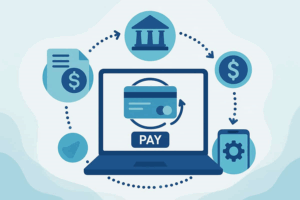
Excerpt: The high-level computing abilities of AI bring significant value to your marketing procedures. Find out how to leverage it to give you a competitive advantage here.
Competitive analysis allows you to examine your business compared to other businesses within a relative market. It analyzes strengths and weaknesses, products, marketing strategies, and their overall position within the market. Applying competitive analysis to your business operations allows you to address market competition with the most relevant information.
Key Factors to Consider When Addressing Market Competition
The six essential factors that you should consider when employing a competitive analysis approach include:
- Market Share Analysis examines your competitor’s influence on the market in terms of their size. It considers key data such as units sold, revenue, engagement, and digital visibility to give you insight into how strong your competitor is.
- Competitor Positioning evaluates your competitor’s influence by how they brand and communicate their products. A few examples include the platforms and media used when advertising. This factor is important for determining which strategies yield the best results and helps you decide how to make your brand unique.
- Target Audiences refer to the people your product or service is designed for. Categorizing these individuals will bring awareness to different demographics and provide insight into the potential number of people you can reach.
- Brand Perception and Reputation view competitive positioning from the perspective of consumer opinions. This is important because their decisions directly affect how they view your brand.
- Product and Service Offerings offer information by examining your competitors’ products. This can help you gather information regarding unique selling points, brand positioning tactics, and the commonality among successful products within the target market.
- Marketing Channels and Tactics refer to the platforms used to advertise your product and how to approach these different mediums. These platforms can include social media, streaming services, and email marketing. This factor is essential for increasing brand awareness and generating leads for a potential sale.
How AI can Give you an Edge Against Your Competition
AI computing technology can positively influence the factors mentioned above by streamlining and automating tasks that would otherwise require a lot of attention.
Key Benefits of AI:
Increased Productivity: Automate repetitive tasks, such as data analysis, ad campaign planning, and outreach procedures, as well as collect, manage, and process large volumes of data.
Cost-Effectiveness: Cloud services such as Tensorwave offer high-power computing services so you can implement AI in your strategies at an affordable rate. AI models can complete attention-intensive tasks, which reduces the need to spend money recruiting people to fulfill roles.
Scalability: The capability of handling and processing large data sets makes the potential to upscale your business more achievable.
Common Use Cases:
- Automating Procedures: AI can help optimize your business strategy by automating content generation for advertisements, invoice creation, and inventory management. This frees up human resources for other productive tasks that require a hands-on approach.
- Data Management: AI algorithms can quickly collect, manage, and analyze large volumes of competition data to support decision-making processes. They enhance key data management components, including governance, quality assurance, integration, security, and lifecycle management, by streamlining and automating the typical procedures associated with each. In addition, collected data regarding market competition can be presented in an easily understood way to provide crucial information for your strategizing processes.
Key Takeaways
If you are short on time, here are some of the main ideas discussed in this article.
- Competitive analysis allows you to utilize different perspectives to examine your competitors’ impact on the market and gain a fuller understanding to facilitate decision-making processes.
- Key components of competitive analysis to consider include market share analysis, competitor positioning, target audiences, brand reputation, product/services offered, marketing channels
- The key benefits of AI include increased efficiency, cost-effectiveness, scalability
- Common use cases for AI in competitive analysis include automating repetitive tasks and effective data management

















